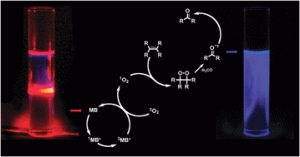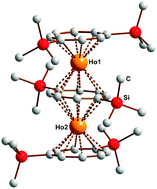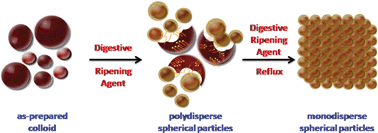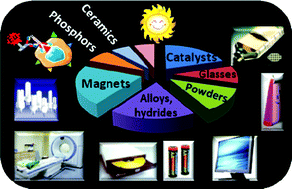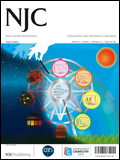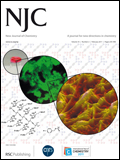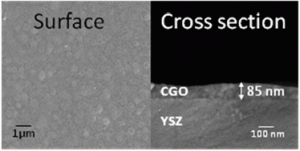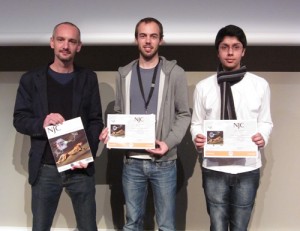We are delighted to present a selection of our authors from this March issue of NJC, who have kindly taken some time outside their research to answer a few questions for us. From the USA to New Zealand, through Germany and China, tour our authors’ profiles and enjoy the journey!
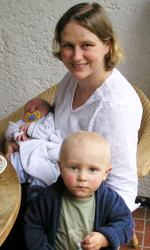 Women first, with Prof. Birgit Weber from the University of Bayreuth in Germany, whose research interests lie in inorganic chemistry and the study of spin crossover complexes. One of the aims in spin crossover research is the purposeful synthesis of spin crossover materials with wide thermal hysteresis loops. Intermolecular contacts play an important role for the appearance of wide hysteresis loops. For a better understanding of those interactions, we introduced the crystal contact index (CCI) to allow a quantitative analysis, explains Birgit. Read the article by Birgit Weber et al., entitled Complete and incomplete spin transitions in 1D chain iron(II) compounds which presents a quantitative correlation between the cooperative effects and the structural properties of iron(II) spin crossover complexes. NJC was chosen ‘as it is an international journal with a good reputation and a wide and general readership’, says the author. Outside the lab, Birgit enjoys spending time with her family, and playing with the children who are 1, 3, and 5 years old – pictured here with Carl and Emma. When asked for an alternative career path if not a scientist, ‘I would be a teacher or a cook’, says Birgit, ‘as I now do both!’
Women first, with Prof. Birgit Weber from the University of Bayreuth in Germany, whose research interests lie in inorganic chemistry and the study of spin crossover complexes. One of the aims in spin crossover research is the purposeful synthesis of spin crossover materials with wide thermal hysteresis loops. Intermolecular contacts play an important role for the appearance of wide hysteresis loops. For a better understanding of those interactions, we introduced the crystal contact index (CCI) to allow a quantitative analysis, explains Birgit. Read the article by Birgit Weber et al., entitled Complete and incomplete spin transitions in 1D chain iron(II) compounds which presents a quantitative correlation between the cooperative effects and the structural properties of iron(II) spin crossover complexes. NJC was chosen ‘as it is an international journal with a good reputation and a wide and general readership’, says the author. Outside the lab, Birgit enjoys spending time with her family, and playing with the children who are 1, 3, and 5 years old – pictured here with Carl and Emma. When asked for an alternative career path if not a scientist, ‘I would be a teacher or a cook’, says Birgit, ‘as I now do both!’
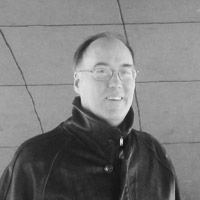 Our next author is Jonathan S. Lindsey, Glaxo Distinguished University Professor of Chemistry at North Carolina State University. Prof. Lindsey’s research interests focus on in tetrapyrrole chemistry, understanding fundamental processes underlying photosynthesis by biomimetic reconstruction, and the early-Earth origins of photosynthesis and its relation to the origin of life. In this issue of NJC, Jon has authored two papers: one of our high-profile format Focus reviews, and an article entitled De novo synthesis and photophysical characterization of annulated bacteriochlorins. Mimicking and extending the properties of bacteriochlorophylls. ‘Bacteriochlorins are central to bacterial photosynthesis yet have largely remained outside the scope of synthesis and physical studies. The development of new routes to stable synthetic bacteriochlorins should open the door to a host of photophysical studies, and in so doing perhaps deepen our understanding of photosynthetic processes’, explains Jon.
Our next author is Jonathan S. Lindsey, Glaxo Distinguished University Professor of Chemistry at North Carolina State University. Prof. Lindsey’s research interests focus on in tetrapyrrole chemistry, understanding fundamental processes underlying photosynthesis by biomimetic reconstruction, and the early-Earth origins of photosynthesis and its relation to the origin of life. In this issue of NJC, Jon has authored two papers: one of our high-profile format Focus reviews, and an article entitled De novo synthesis and photophysical characterization of annulated bacteriochlorins. Mimicking and extending the properties of bacteriochlorophylls. ‘Bacteriochlorins are central to bacterial photosynthesis yet have largely remained outside the scope of synthesis and physical studies. The development of new routes to stable synthetic bacteriochlorins should open the door to a host of photophysical studies, and in so doing perhaps deepen our understanding of photosynthetic processes’, explains Jon.
‘My colleagues Profs. David Bocian and Dewey Holten and I wanted a general readership journal and the flexibility to write a comprehensive paper encompassing biological import, molecular design, chemical synthesis, photophysical studies, and theoretical calculations.’ Hence the authors’ choice for NJC. In his free time, Jon loves spending time with his nearly three-year old boy Linus and trying to understand how he perceives the world. If not a scientist, Jon would love to be a philantropist.
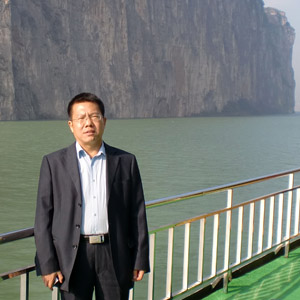 Our next author is Zhaozhu Zhang, Professor of Chemistry at the Lanzhou Institute of Chemical Physics, Chinese Academy of Sciences, P.R. China. His current research interests are focused on multifunctional composite materials for applications in superhydrophobic or superoleophobic surfaces.
Our next author is Zhaozhu Zhang, Professor of Chemistry at the Lanzhou Institute of Chemical Physics, Chinese Academy of Sciences, P.R. China. His current research interests are focused on multifunctional composite materials for applications in superhydrophobic or superoleophobic surfaces.
In their article, Prof. Zhang’s team describes a simple approach to fabricate superoleophobic coatings by spraying the copper perfluorooctanoate suspension on the substrates. These coatings could be very promising for the widest array of applications as it can be applied to various surfaces without limitations of size and shape, without the need of complicated application methods. Such coatings were also found to be easily repairable after being mechanical damaged. Zhaozhu and his colleagues chose NJC due to the very large diversity of the articles published in the journal. ‘We thought this work about superoleophobicity was particularly suitable for NJC. In addition, the NJC review and publication process are very satisfying’, says Zhaozhu. In his spare time, playing badminton is Zhaozhu’s favourite hobby, which he plays on a regular twice-a-week basis.
 Closing this month’s selection, we are pleased to present Peter Boyd, Associate Professor of Chemistry at the University of Auckland in New Zealand. Peter’s main research interests are in the areas of synthetic, x-ray structural and physical properties of supramolecular fullerene-porphyrin complexes based on the attraction between the curved π surface of the fullerene and the planar porphyrin π surface, and the application of computational chemistry in studies of the structure, reactivity and spectroscopic properties of inorganic and organometallic complexes. His paper “A supramolecular porphyrin–ferrocene–fullerene triad” by Dani Lyons, John Mohanraj, Gianluca Accorsi, Nicola Armaroli and Peter Boyd is the result of a collaboration with Nicola Armaroli and his group in Bologna. It describes the synthesis of new bisporphyrin hosts with appended secondary donors that form strong complexes with fullerenes and the photophysical properties of these complexes. NJC was chosen for this publication as it has a significant number of publications in the areas of supramolecular chemistry, porphyrin and fullerene chemistry and their photophysical properties’, says Peter. Perhaps have you guessed from the picture, Peter’s favorite activity outside the lab is gardening, in particular landscape gardening and the cultivation of rhododendrons and azaleas.
Closing this month’s selection, we are pleased to present Peter Boyd, Associate Professor of Chemistry at the University of Auckland in New Zealand. Peter’s main research interests are in the areas of synthetic, x-ray structural and physical properties of supramolecular fullerene-porphyrin complexes based on the attraction between the curved π surface of the fullerene and the planar porphyrin π surface, and the application of computational chemistry in studies of the structure, reactivity and spectroscopic properties of inorganic and organometallic complexes. His paper “A supramolecular porphyrin–ferrocene–fullerene triad” by Dani Lyons, John Mohanraj, Gianluca Accorsi, Nicola Armaroli and Peter Boyd is the result of a collaboration with Nicola Armaroli and his group in Bologna. It describes the synthesis of new bisporphyrin hosts with appended secondary donors that form strong complexes with fullerenes and the photophysical properties of these complexes. NJC was chosen for this publication as it has a significant number of publications in the areas of supramolecular chemistry, porphyrin and fullerene chemistry and their photophysical properties’, says Peter. Perhaps have you guessed from the picture, Peter’s favorite activity outside the lab is gardening, in particular landscape gardening and the cultivation of rhododendrons and azaleas.
So this is all for now, and we would like to thank very kindly these prominent scientists for accepting our invitation to join in this highlight, showcasing the diversity of the chemistry published in NJC. Thanks to all of you, and see you next month for more!
Fancy submitting an article to NJC? Then why not submit to us today or alternatively email us your suggestions.














